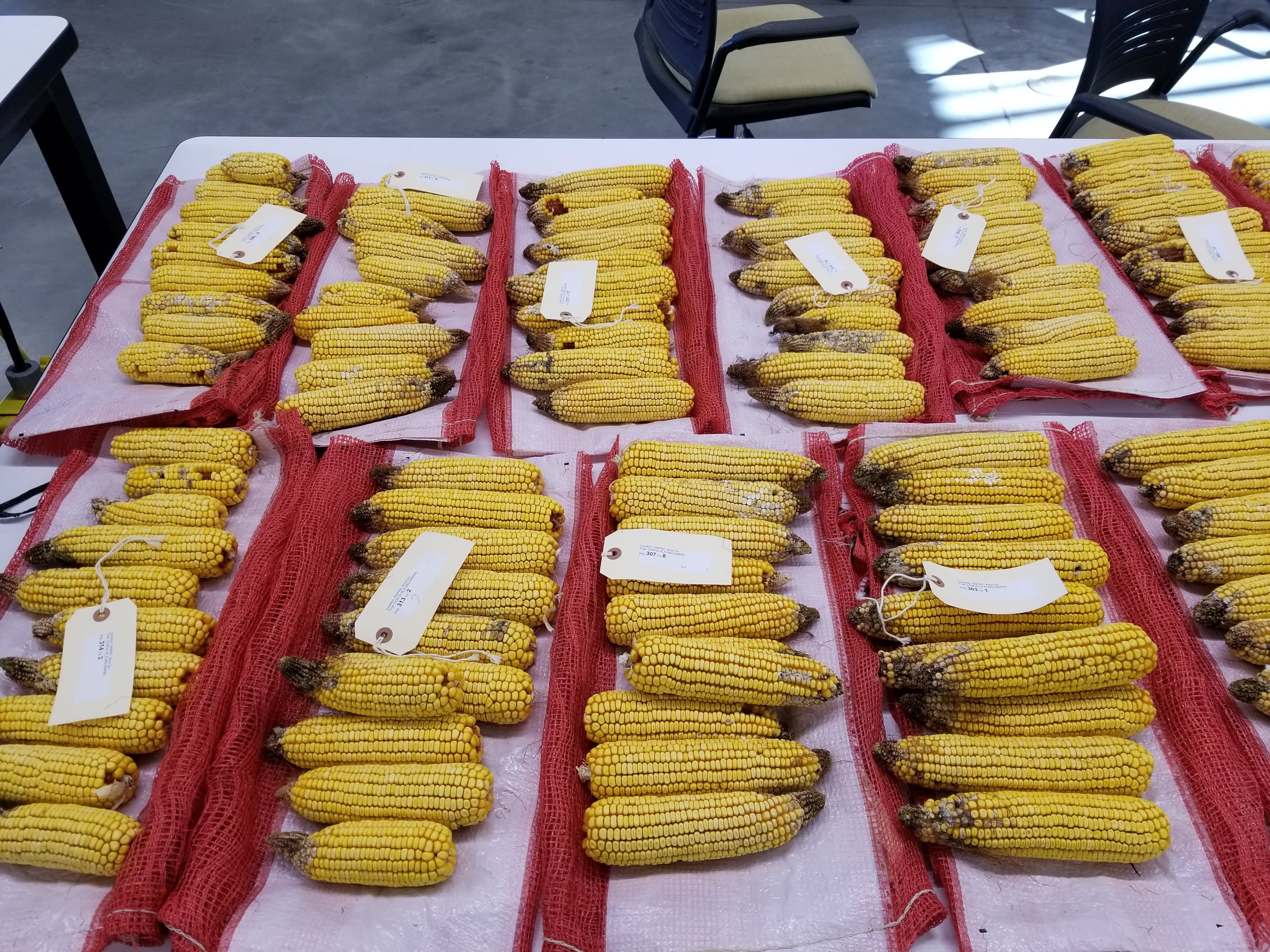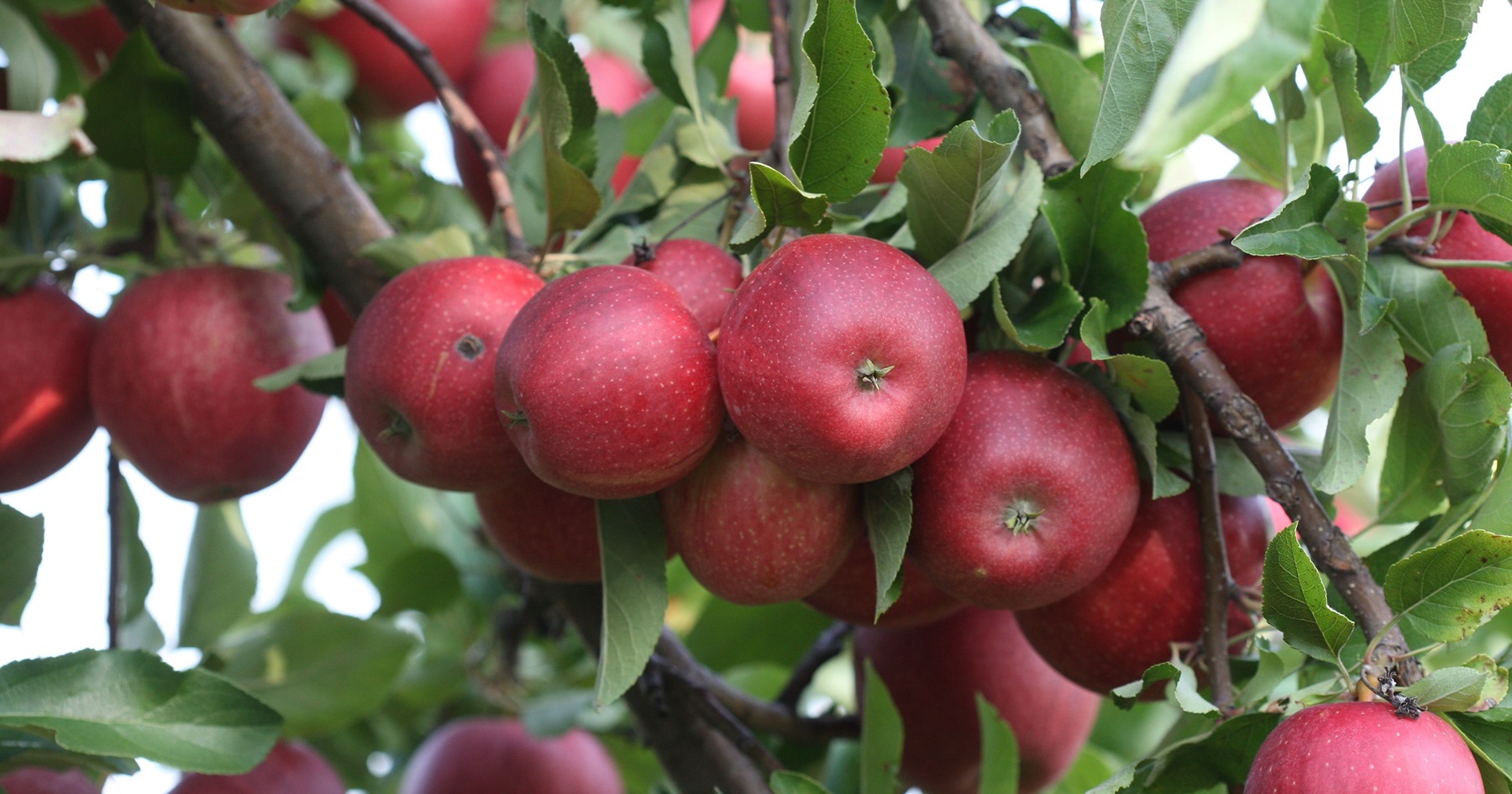Wells County
The Cooperative Extension Service is one of the nation's largest providers of scientific research-based information and education. It's a network of colleges, universities, and the U.S. Department of Agriculture, serving communities and counties across America. The Purdue University Cooperative Extension Service program areas are:
Agriculture and Natural Resources
Health and Human Sciences
Community Development
4-H Youth Development
Purdue Extension is a service tailored to meet the needs of Indiana, needs we know firsthand. Our educators, specialists, and volunteers live and work in all 92 Indiana counties. We provide the link between Land Grant research and Indiana citizens. In doing that we provide practical solutions to local issues. We provide information and expertise that's available in the form you want, when you want it. That's Purdue Extension, Indiana's home team advantage.
What We Do
We improve lives and livelihoods by delivering tested and trusted educational resources. The Cooperative Extension Service is one of the nation's largest providers of scientific research-based information and education. It's a network of colleges, universities, and the U.S. Department of Agriculture, serving communities and counties across America. The Purdue Extension focuses on: Agriculture and Natural Resources, Human and Health Sciences, Economic and Community Development and 4-H Youth.
Contact Us
Purdue Wells County Extension
horan@purdue.edu
1240 4-H Park Road
Bluffton, IN 46714
(260) 824-6412
2024 Wells County 4-H Rule Book
Check out the 2024 Wells County 4-H Rule Book for updated information about your 4-H projects.
2024 Wells County 4-H Rule BookServSafe Classes Offered
For more information and a list of available trainings and exams in our area visit the Purdue ServSafe link below.
Learn More HereWells County Newsletters
Check out Health and Human Science Newsletters with helpful articles on health, nutrition, family and finances.
The November/December 2024 edition includes the following articles:
Holiday Stress? Try Our Top 5 Tips For a Healthy Holiday Season
If the holidays sometimes leave you feeling overwhelmed and out of control, you’re not alone. And if the Grinch has stolen your spirit and good intentions, try some of these tips to reclaim your ho-ho-ho and stay happy and healthy.
1. Keep up healthy habits.
Make a pact with yourself during the holidays. Decide that you’ll move more and do something active every day over the next three weeks. Take it a step further, and pledge to start the day with a healthy breakfast, limit the sweets and get at least seven hours of sleep each night. If you don’t completely give up your healthy habits, you won’t feel like you have to start over once the holidays are over.
2. Beware of seasonal sweets.
The holidays often dish up extra helpings of less-than-healthy treats. Try preparing healthy snacks that are ready to eat when the urge to snack strikes. If you’re hosting a holiday party, challenge yourself to make delicious and healthier options using our recipes and cooking tips.
3. Stay active.
Instead of beating yourself up about missing a workout, sprinkle some healthy activities into your daily routine. For example, if the weather isn’t too frightful and you’re working from home, ride your bike around your neighborhood during a lunch break. If dinner is going to be a feast, opt for a light lunch, then take a vigorous walk. And keep the family moving. When the kids are home from school, squeeze in some active chores and trips to the park.
4. Take time for yourself.
Give yourself the gift of peace. If you need some downtime to recharge, declare a “me-treat” and do something that relaxes you. Try yoga, meditation or spending time in nature.
5. Make a plan for the new year.
Your poinsettia’s pooped and the gifts are all gone. Now what? It’s a great time to reset for the new year – but don’t go dashing through your to-do list too fast, or you might not stick to your plan. Lay out realistic, sustainable steps for the months ahead. For example, start a daily walking routine and sign up for a Heart Walk before you set your sights on that marathon.
Source: www.heart.org
Tips for Making YOur Holiday Meals Healthier
It’s the holiday season, and planning is underway for good times filled with friends, family and foods. It seems that every advertisement in stores, in magazines and on social media all refer to some form f holiday eating. We often give in to the festivities and overindulge in good-tasting food, but these foods may not be the healthiest for us. As we prepare food for family and friends, there are ways to make favorite holiday recipes healthier and still taste great.
Reduce the amount of fat and sugar when baking without losing the flavor.
Cutting the fat and sugars in half in a recipe is an easy way to cut added calories.
- Use half the butter and replace it with unsweetened applesauce, mashed bananas or even prune purée.
- Reduce the amount of sugar by one-third to one-half. Add rich-tasting spices to bolster flavor, such as cinnamon, cloves or allspice. You can even use extracts such as almond, vanilla or wintergreen.
- Cut the amount of cheese in a recipe by half. If your recipe calls for one cup of cheese, ½ cup would be sufficient, and you will be able to better taste the flavors of the other ingredients.
Make healthy substitutions that will boost the fiber content.
- Use whole wheat pasta instead of white pasta.
- Use brown rice instead of white rice.
- Use whole-grain bread and rolls.
Leave out ingredients.
- Leave out mayonnaise, butter or jelly in a recipe.
- Leave out excessive amounts of frosting, nuts and chips when baking.
Choose a different technique of preparation, such as broiling, grilling or steaming.
These methods can capture the flavor of your delicious foods without adding calories:
- Instead of frying, try broiling fish, meat and even vegetables.
- Try a fruit juice or vinegar if a recipe says to baste with oil.
- Use non-stick pans to eliminate oil when cooking.
Pay attention to your portion size.
- If the recipe is still very high in fat and sugars, reduce the portion size you eat.
- When reducing portion size, add healthy choices to help fill you up. Filling half of your plate with fruits or vegetables a great place to start.
Eating well can be difficult over the holiday season, but finding ways to enjoy your favorite family meals is possible by making mindful choices. No matter how much you indulge over the holidays, remember it is never too late to get back on track with your healthy habits.
matter of balance
homesteading conference
More Than Just a Meal
What is a family meal? A “family meal” is when the people you live with come together to eat and talk. It can include everyone or just you and your child. Family meals don’t have to be fancy, and they can be eaten at home or away. Meals are best when you talk and listen to each other with no distracting electronic devices.
Do family meals make a difference?
Family meals are a simple way to build healthy relationships and promote health. Coming together as a family to share meals is associated with many benefits. Here are four:
Connection: Children and adults thrive on human connection. Eating meals together provides a great opportunity to connect with family and friends. Children — even teenagers! — thrive on having a mealtime routine they can count on. To make the most of the opportunity, turn off televisions, cellphones and other distractions. Gather at a table or somewhere you can focus on one another.
Emotional well-being: Families who eat together have children who are less likely to be depressed and less likely to engage in risk-taking behaviors, such as smoking, drugs, and drinking alcohol. Family meals are also associated with a reduced risk for eating disorders.
Academic success: At meals, children practice important social skills, such as taking turns and engaging others in conversation. Children increase their vocabulary and learn how to express ideas at family meals. These benefits help explain why children who eat family meals more frequently are found to do better in school.
Healthier eating habits and weight: Meals planned and prepared for family meals are generally more nutritious than meals eaten alone or on the run. Family meals also provide an opportunity for parents to model good eating habits and attitudes about food. Family meals are associated with healthier weights in children and adults.
How can families succeed at having meals together?
Make family meals a priority – Parents and children make time for what is important to them. Prioritize family meals over other activities as often as possible. Schedule them on the family calendar, even if only once a week. Recognize that eating is an essential activity. Do it together rather than apart.
Plan for family meals – Look at your schedule and determine the days and times that eating together is possible. Decide what you will prepare; make sure you have what you need on hand. A weekly menu plan prevents last-minute worries about what to cook. Shopping for the week saves time and money — and reduces stress. Use time-saving strategies, such as doubling a recipe and freezing half for a future meal.
Share preparation tasks – Involve everyone in age appropriate tasks, including meal planning, finding recipes, grocery shopping, cooking, setting the table, and cleanup. Young children can do a variety of kitchen tasks. Older children can plan and prepare meals. Parents get valuable help and children learn lifelong skills.
Make meals enjoyable – Create an atmosphere where everyone feels relaxed and valued. Engage everyone in conversation. Use conversation starters to get people talking. Avoid battles over food – parents provide and children decide how much to eat of what is offered.
Tips for families of preschoolers
- Establish mealtime routines that prevent “hangry” young children. Include well-spaced meals and snacks. Provide sensible “appetizers,” such as raw veggies, while waiting for a meal. Prompt children with a signal, such as a 2-minute countdown, to put away toys, turn off devices, wash hands, and come eat.
- Involve young children in one or more meal-related tasks: picking out produce at the grocery store, pouring and stirring ingredients, dishing their own food, clearing their plate.
- Help young children learn the art of conversation. Allow them to tell stories about their day.
Tips for families of school-age kids
- Create a meal planning calendar. Ask your children to search for recipes online, make a shopping list and carry out prep from start to finish for one or more meals each week.
- Meal preparation helps school-age children practice math skills, food science, and creativity.
- Establish boundaries during mealtime that prohibit or limit the use of electronic devices. Engage children in conversation. Show them you value their opinions and ideas.
Tips for families of teenagers
- Scheduling is tricky. Be creative. Commit to as many meals together as possible — and make them happen by planning ahead.
- Meal planning and preparation are valuable lifelong skills. As often as possible, let your teenager be in charge.
- Teens need family connection as much or more than ever, so maintain a “no electronic devices” rule at your family table. Set an example by following the rule yourself.
Source: Purdue Publication HHS-832-W
A PDF version of this newsletter is available HERE.
News Notes for Parents is a newsletter geared towards parents with children ages 8 and under. You will find articles about parenting, early childhood education, nutrition and much more.
In the November 2024 issue of News Notes for Parents, you will find the following articles:
Understanding Your Paycheck
About 31% of your paycheck is withheld for taxes, retirement, health care, child care, and various other authorized withholdings.
When you start a new job, you complete a W-4 form along with many other forms. On this form, you tell your employer how many dependents you have so they know how much to withhold from your weekly paychecks.
Gross Pay vs. Net Pay
- Gross Pay: This is the total amount you earn before any deductions. It includes your hourly wages multiplied by the number of hours worked or your salary if you're on a fixed rate.
- Net Pay: This is your take-home pay after all deductions (like taxes and other withholdings) have been subtracted from your gross pay.
Deductions from Paycheck
Here's a breakdown of common deductions:
- Federal Tax Withholding: Based on your W-4, this amount is withheld to cover your federal income tax obligations.
- State Tax Withholding: Similar to federal withholding but based on your state's tax rates.
- FICA (Federal Insurance Contributions Act):
- Social Security Tax (6.2%): Funds retirement benefits and disability insurance. Employers match this contribution.
- Medicare Tax (1.45%): Provides health insurance for the elderly and disabled, with employers also matching this contribution.
- Medical and Dental Insurance: Premiums for health insurance plans you select, which can vary based on coverage levels.
- HSA (Health Savings Account) or FSA (Flexible Spending Account): Pre-tax contributions that can be used for eligible medical expenses or childcare costs.
- Retirement Programs: Contributions to retirement savings plans like a 401(k) can be deducted pre-tax, which lowers your taxable income.
- Life Insurance: Optional life insurance premiums can also be deducted, depending on the employer’s offerings.
Importance of Monitoring Your Paycheck
It’s essential to review your paycheck for accuracy:
- Ensure all personal information is correct (name, address, etc.).
- Verify that your hours worked align with what you’re being paid.
- Check that all deductions are accurate and match what you’ve agreed to in your benefits selections.
This diligence can help you catch errors early and ensure you’re receiving the correct compensation for your work. If you have any specific questions about these deductions or anything else, feel free to ask your human resource office.
Source: Family Economics & Financial Education - Revised March 2008 - Paychecks and Taxes Unit - Understanding Your Paycheck
Cooking as a family
Cooking makes kids feel good.
Your kids will feel proud and important when they help prepare food! Helping with chores in the kitchen is another way they can be part of the family, and it can encourage them to make healthier choices. Cooking is also fun—because kids are natural kitchen helpers. They like the simple tasks of thinking about what to serve, and then cooking and serving food to the family. It’s just like a game.
Cooking teaches.
Kitchen tasks give your child a chance to measure, count and see food change. That is early math and science learning. Your child can learn new words and symbols by cooking with you. Talk about the food and what you’re doing. Read words on food containers together. Small muscle skills develop, too, when your child uses his or her hands to help with kitchen tasks. And cleanup teaches responsibility. Cooking is one of the many creative, messy things we do, and doing it as a family makes it even more fun!
Cooking together is fun family time.
Kitchen time can be a special parenting time. Cooking together creates closer bonds and helps build lifelong memories. You can also use the time to listen, share and talk with your child.
To read the full article, visit https://eatgathergo.org/gather/cooking-as-a-family/
gingerbread pancakes
Ingredients
1 1/2 cups all purpose flour
1/3 cup dark brown sugar
1 1/2 teaspoons baking powder
1/2 teaspoon baking soda
1 teaspoon ground cinnamon
1/2 teaspoon ginger
1/4 teaspoon ground nutmeg
1/4 teaspoon cloves
1/4 teaspoon kosher salt
1 1/4 cup milk
2 tablespoons molasses
2 large eggs
2 tablespoons melted butter
Before you begin: Wash your hands.
- Whisk the dry ingredients in a bowl.
- In a separate bowl whisk the liquid ingredients.
- Add the flour mixture to the liquid mixture and whisk until just combined.
- Let the batter stand for 10-15 minutes to thicken.
- Place 2 tablespoons of the mixture in a large, greased sauté pan over medium heat and cook for 2-3 minutes on each side.
- Serve with maple syrup or honey.
Source: https://weelicious.com/gingerbread-pancakes/
- 2025 Enrollment!
- Enrollment for the 2024-2025 program year begins Tuesday, October 1st! This enrollment period applies to all 4-H participants including Mini 4-H (grades K-2), traditional 4-H members (grades 3-12), and all adult volunteers. Brief instructions are listed below, but a detailed version will be sent in the mail and is available online at www.extension.purdue.edu/wells
- Enrollment Instructions:
- Go to https://v2.4honline.com
- Enter your email and password, then click “Sign In”. Do not create a new account. If you have forgotten your username/password please call the Extension Office.
- Continue to Youth & Mini 4-H Member Enrollment
- Select the member you wish to enroll and update grade level.
- Continue on to “Select Club”, then “Select Projects”
- Once complete, click “Select Questions” and fill out correctly.
- Pay member dues. Enrollments will not be approved until payment is complete.
- Save the Date:
- 2025 Wells County 4-H Fair - Saturday, July 12th - Thursday July 17th
- Calendar of Events:
- November:
- November 4: Junior Leader Meeting, 6:00PM, Meeting Rooms
- November 11: Club Leader Meeting, 7:00PM, Meeting Rooms
- November 12: Council Meeting, 7:00PM, Meeting Rooms Officer Elections
- November 18: Association Meeting, 7:00PM, Meeting Rooms Officer Elections
- December:
- December 7: Junior Leader Christmas Party, 9:00AM
- Adult Volunteer Enrollment:
- Adult volunteers must re-enroll in 4-H Online to be a volunteer for the 2024-2025 year, This means completing all of the volunteer training. It does have to be done each year. Any new volunteers will also need to complete the enrollment process.
- To enroll, log in to your 4-H Online account. Returning members will choose “Adult Enrollment”, and new members should click “Adding New Members”. You will then follow the instructions until enrollment is complete, making sure to watch all the video trainings.
- Cash Your Checks!
- This is a reminder to all 4-H Auction Participants that your checks from the auction should be cashed by November 30th or funds will be forfeited. If you have yet to pick up your check, please do so ASAP! Make sure to bring in your thank you cards addressed, stamped & sealed. Checks will not be handed out until thank you cards have been turned in.
- Club Leaders:
- Each club leader received an email to set up an individual 4-H Club Review with Anya. If yo have not scheduled a time for your club review, please contact Anya at aaulbach@purdue.edu ASAP to get that scheduled.
- Junior Leaders:
- WE WANT YOU! Join the Wells County Junior Leaders Club! Contact Anya at aaulbach@purdue.edu if you are interested in learning more!
- What is the Junior Leader Club? It's a club that offers 4-J members in grades 7-12 county-wide opportunities to meet and serve the community. Junior Leaders will be given the opportunity to develop skills in the areas of civic engagement, leadership, entrepreneurship, and more through a variety of hands-on experiences throughout the year.
- What is Mini 4-H?
- Mini 4-H is a program designed to encourage positive development of children in grades K-2. The goal of Mini 4-H is to help young children
- explore friendships outside the family
- explore the way in which things work
- proactive both small and large muscle control
- think about the ways people work together on projects
- The NON-COMPETITIVE learning environment for Mini 4-H includes:
- Planned learning activities in which children are invaded to be active and explore materials and ideas without the pressure of completing a specific product or exhibit
- Low adult/leader to child ratio that allows time for adults/leaders to provide individual, positive encouragement and assistance
- Simple, interesting activities that are fun
- Encouragement of children to participate in a group activity by sharing and or displaying their activity projects
- Rewards that are identical and/or ribbons of the same color for everyone
- Mini 4-H is a program designed to encourage positive development of children in grades K-2. The goal of Mini 4-H is to help young children








